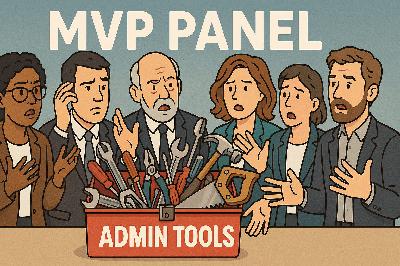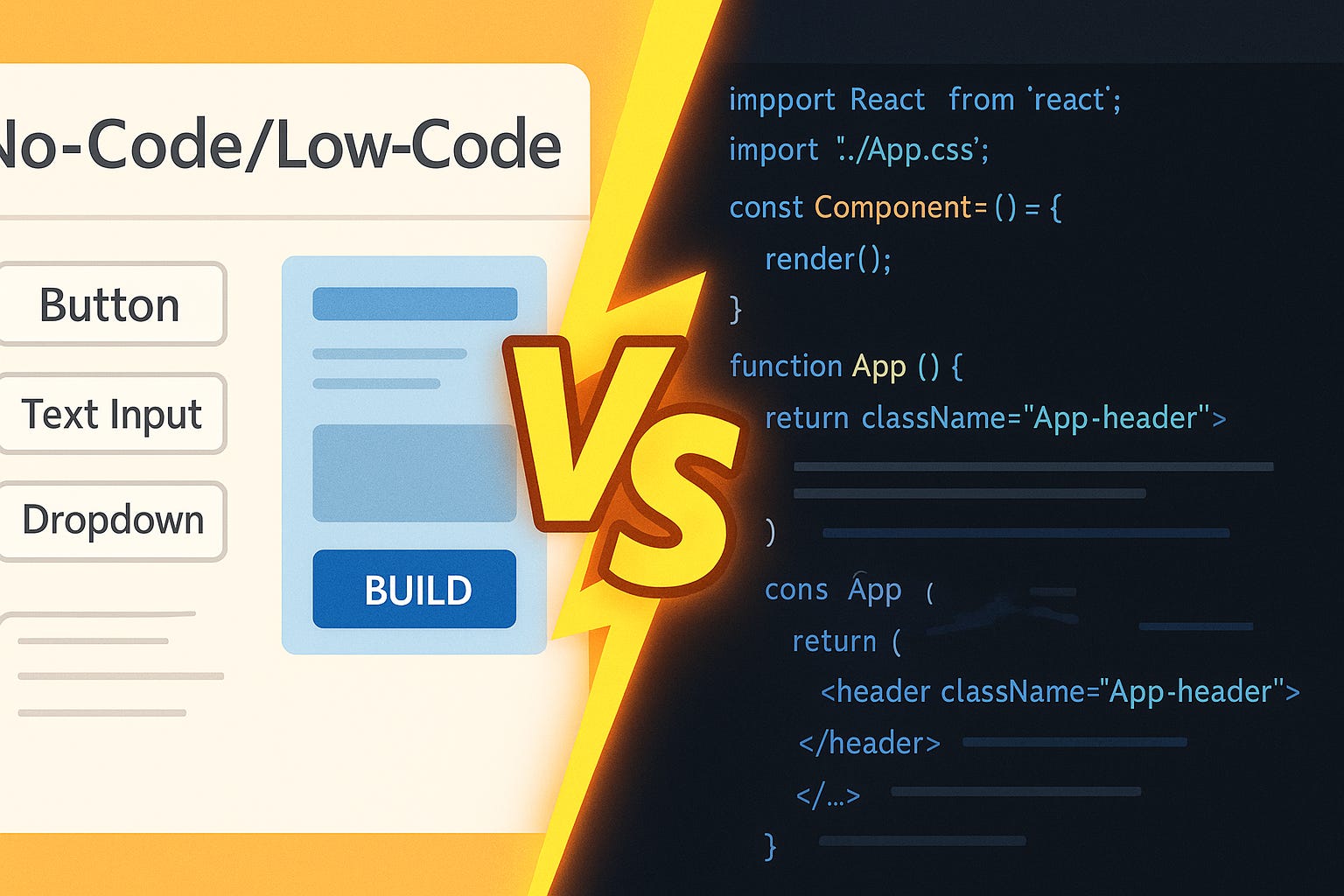Why Dirty Code Always Wins (Until It Doesn't)
Description
Ever notice how the fastest way to ship code is usually the messiest? Logging scattered across controllers, validation stuffed into random methods, and authentication bolted on wherever it happens to work. It feels fast in the moment, but before long the codebase becomes something no one wants to touch. Dirty code wins the short-term race, but it rarely survives the marathon. In this session, we’ll unpack how cross-cutting concerns silently drain your productivity. You’ll hear how middleware and decorator-style wrappers let you strip out boilerplate and keep business logic clean. So how do we stop the rot without slowing down?
Why Messy Code Feels Like the Fastest Code
Picture this: a small dev team racing toward a Friday release. The product owner wants that new feature live by Monday morning. The tests barely pass, discussions about architecture get skipped, and someone says, “just drop a log here so we can see what happens.” Another teammate copies a validation snippet from a different endpoint, pastes it in, and moves forward. The code ships, everyone breathes, and for a moment, the team feels like heroes. That’s why messy code feels like the fastest path. You add logging right where it’s needed, scatter a few try-catch blocks to keep things from blowing up, and copy in just enough validation to stop the obvious errors. The feature gets out the door. The business sees visible progress, users get what they were promised, and the team avoids another design meeting. It’s immediate gratification—a sense of speed that’s tough to resist. But the cost shows up later. The next time someone touches that endpoint, the logging you sprinkled in casually takes up half the method. The validation you pasted in lives in multiple places, but now each one fails the same edge case in the same wrong way. Debugging a new issue means wading through repetitive lines before you even see the business logic. Something that once felt quick now hides the real work under noise. Take a simple API endpoint that creates a customer record. On paper, it should be clean: accept a request, build the object, and save it. In practice, though, logging lives inside every try-catch block, validation code sits inline at the top of the method, and authentication checks are mixed in before anything else can happen. What should read like “create customer” ends up looking like “log, check, validate, catch, log again,” burying the actual intent. It still functions, it even passes tests, but it no longer reads like business logic—it reads like clutter. So why do teams fall into this pattern, especially in startup environments or feature-heavy sprints? Because under pressure, speed feels like survival. We often see teams choose convenience over architecture when deadlines loom. If the backlog is full and stakeholders expect weekly progress, “just make it work now” feels safer than “design a pipeline for later.” It’s not irrational—it’s a natural response to immediate pressure. And in the short term, it works. Messy coding collapses the decision tree. Nobody has to argue about whether logging belongs in middleware or whether validation should be abstracted. You just type, commit, and deploy. Minutes later, the feature is live. That collapse of choice gives the illusion of speed, but each shortcut adds weight. You’re stacking boxes in the hallway instead of moving them where they belong. At first it’s faster. But as the hallway fills up, every step forward gets harder. Those shortcuts don’t stay isolated, either. With cross-cutting tasks like logging or authentication, the repetition multiplies. Soon, the same debug log line shows up in twenty different endpoints. Someone fixes validation logic in one spot but misses the other seven. New hires lose hours trying to understand why controllers are crammed with logging calls and retry loops instead of actual business rules. What once supported delivery now taxes every future change. That’s why what feels efficient in the moment is really a deferred cost. Messy code looks like progress, but the debt it carries compounds. The larger the codebase grows, the heavier the interest gets, until the shortcuts block real development. What felt like the fast lane eventually turns into gridlock. The good news: you don’t have to choose between speed and maintainability.
The Rise of Cross-Cutting Concerns
So where does that slowdown really come from? It usually starts with something subtle: the rise of cross-cutting concerns. Cross-cutting concerns are the kinds of features every system needs but that don’t belong inside business logic. Logging, authentication, validation, audit trails, exception handling, telemetry—none of these are optional. As systems grow, leadership wants visibility, compliance requires oversight, and security demands checks at every step. But these requirements don’t naturally sit in the same place as “create order” or “approve transaction.” That’s where the clash begins: put them inline, and the actual intent of your code gets diluted. The way these concerns creep in is painfully familiar. A bug appears that no one can reproduce, so a developer drops in a log statement. It doesn’t help enough, so they add another deeper in the call stack. Metrics get requested, so telemetry calls are scattered inside handlers. Then security notes a missing authentication check, so it’s slotted in directly before the service call. Over time, the method reads less like concise business logic and more like a sandwich: infrastructure piled on both ends, with actual intent hidden in the middle. Think of a clean controller handling a simple request. In its ideal form, it just receives the input, passes it to a service, and returns a result. Once cross-cutting concerns take over, that same controller starts with inline authentication, runs manual validation, writes a log, calls the service inside a try-catch that also logs, and finally posts execution time metrics before returning the response. It still works, but the business purpose is buried. Reading it feels like scanning through static just to find one clear sentence. In more regulated environments, the clutter grows faster. A financial application might need to log every change for auditors. A healthcare system must store user activity traces for compliance. Under data protection rules like GDPR, every access and update often requires tracking across multiple services. No single piece of code feels extreme, but the repetition multiplies across dozens or even hundreds of endpoints. What began as a neat domain model becomes a tangle of boilerplate driven by requirements that were never part of the original design. The hidden cost is consistency. On day one, scattering a log call is harmless. By month six, it means there are twenty versions of the same log with slight differences—and changing them risks breaking uniformity across the app. Developers spend time revisiting old controllers, not because the business has shifted, but because infrastructure has leaked into every layer. The debt piles up slowly, and by the time teams feel it, the price of cleaning up is far higher than it would have been if handled earlier. The pattern is always the same: cross-cutting concerns don’t crash your system in dramatic ways. They creep in slowly, line by line, until they smother the business logic. Adding a new feature should be a matter of expressing domain rules. Instead, it often means unraveling months of accumulated plumbing just to see where the new line of code belongs. That accumulation isn’t an accident—it’s structural. And because the problem is structural, the answer has to be as well. We need patterns that can separate infrastructure from domain intent, handling those recurring concerns cleanly without bloating the methods that matter. Which raises a practical question: what if you could enable logging, validation, or authentication across your whole API without touching a single controller?
Where Design Patterns Step In
This is where design patterns step in—not as academic buzzwords, but as practical tools for keeping infrastructure out of your business code. They give you a structured way to handle cross-cutting concerns without repeating yourself in every controller and service. Patterns don’t eliminate the need for logging, validation, or authentication. Instead, they move those responsibilities into dedicated structures where they can be applied consistently, updated easily, and kept separate from your domain rules. Think back to those bloated controllers we talked about earlier—the ones mixing authentication checks, logs, and error handling right alongside the actual business process. That’s not unusual. It’s the natural byproduct of everyone solving problems locally, with the fastest cut-and-paste solution. Patterns give you an alternative: instead of sprinkling behaviors across dozens of endpoints, you centralize them. You define one place—whether through a wrapper, a middleware component, or a filter—and let it run the concern system-wide. That’s how patterns reduce clutter while protecting delivery speed. One of the simplest illustrations is the decorator pattern. At a high level, it allows you to wrap functionality around an existing service. Say you have an invoice calculation service. You don’t touch its core method—you keep it focused on the calculation. But you create a logging decorator that wraps around it. Whenever the calculation runs, the decorator automatically logs the start and finish. The original service remains unchanged, and now you can add or remove that concern without touching the domain logic at all. This same idea works for validation: a decorator inspects inputs before handing them off, throwing errors when something looks wrong. Clean separation, single responsibility preserved. Another powerful option, especially in .NET, is middleware. Middleware is a pipeline that every request flows through befo





















